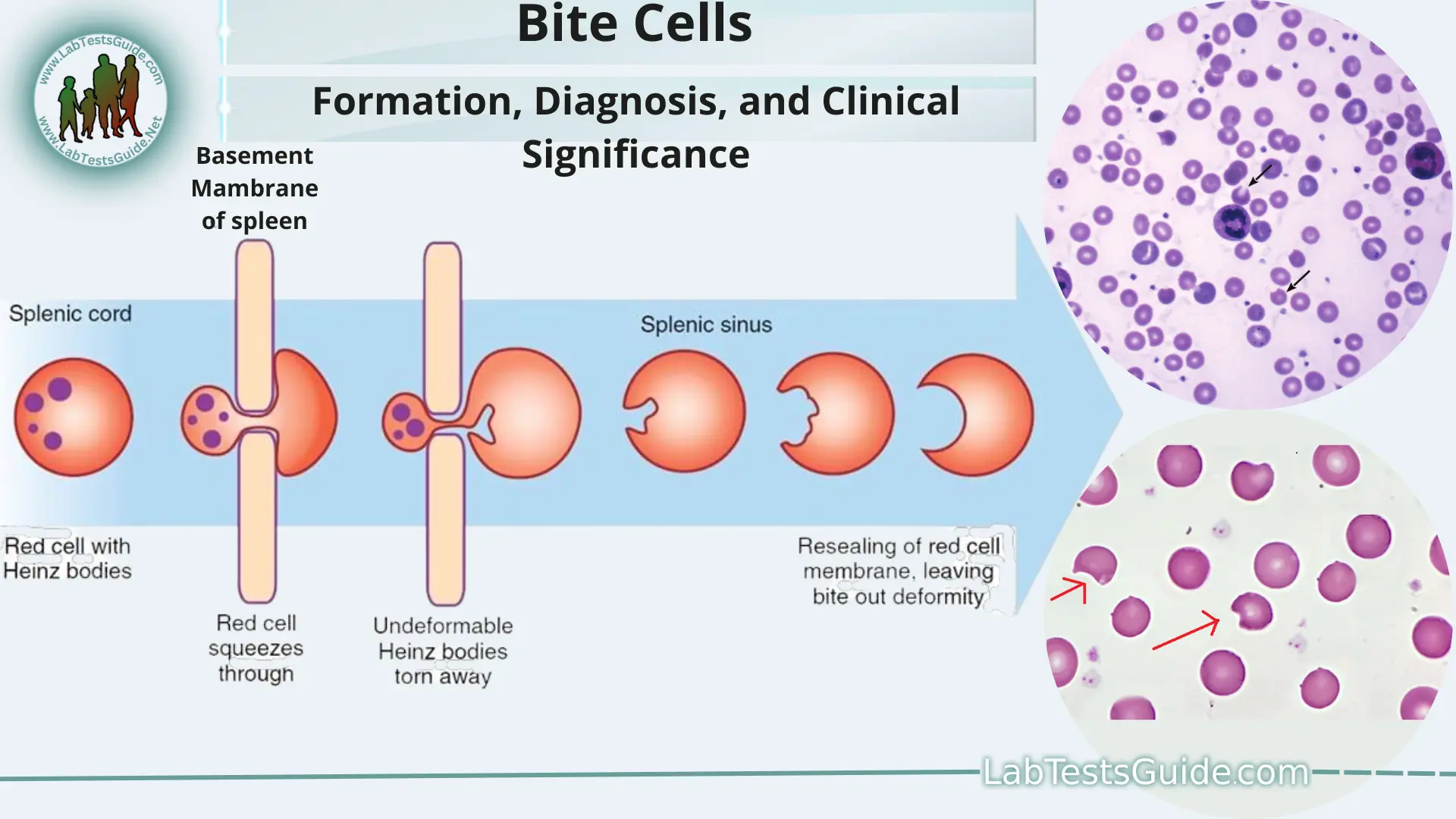Bite cells, also known as degmacytes, are caused by the spleen removing abnormal, denatured hemoglobin from red blood cells. This often occurs in conditions like glucose-6-phosphate dehydrogenase (G6PD) deficiency, where oxidative stress damages the hemoglobin, leading to its precipitation and removal by splenic macrophages. Other causes include certain medications, toxins, or even mechanical damage to red blood cells.
Elaboration:
Heinz Bodies:
When hemoglobin is damaged by oxidative stress, it can precipitate out of the red blood cell, forming Heinz bodies.
Splenic Removal:
The spleen, a major organ in the lymphatic system, filters blood and removes damaged or old red blood cells. In the case of bite cells, splenic macrophages, a type of white blood cell, “bite” out the Heinz bodies from the red blood cell membrane, creating a characteristic bite-like appearance.
Causes of Bite Cells:
G6PD Deficiency: This is a common cause, as the lack of G6PD enzyme makes red blood cells more susceptible to oxidative damage.
Oxidant Drugs: Certain medications like dapsone can cause oxidative stress, leading to Heinz body formation and bite cells.
Toxins: Exposure to certain toxins or chemicals can also damage hemoglobin and lead to bite cells.
Mechanical Damage: In conditions like thrombotic microangiopathies, red blood cells can be damaged by mechanical forces, resulting in a similar bite-like appearance.
Hemoglobinopathies: Abnormal hemoglobins, like those found in sickle cell anemia, can also be removed by the spleen, leading to bite cells.
Liver Disease: Severe liver disease can also contribute to the formation of bite cells.
Bite cells vs. Schistocytes:
It’s important to differentiate bite cells from schistocytes, which are red blood cell fragments caused by mechanical damage to the red blood cells themselves. Bite cells have a characteristic “bite” or indentation, while schistocytes are fragments.


Leave a Reply